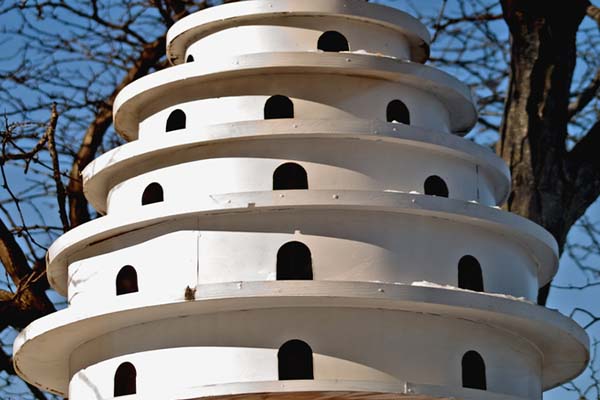Contents
- When Should You Expect To See Martins Nesting In Your Purple Martin Colony Bird House?
- What Other Birds Live In A Purple Martin House?
- How To Keep House Sparrows And Starlings Out Of Martin Houses
- Installing Purple Martin Houses: Best Methods To Attract Purple Martins
- Where Purple Martins Are Most Commonly Found
Purple martins are beautiful, insect-eating birds that spend the winter in Central America. When they return to North America at the end of March, they’ll nest in birdhouses made specifically for their needs. Indeed, this is a special type of birdhouse designed only for purple martin colonies!
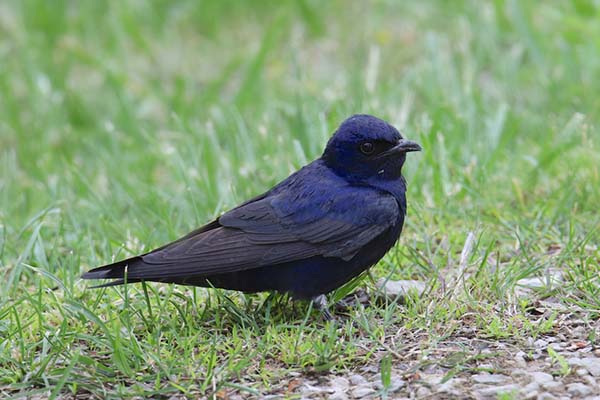
But, will different birds use a Purple martin house before the martins return in the Spring? The short answer… yes, House Sparrows and European Starlings are known for invading and taking up residence in Purple Martin birdhouses. And these birds are fierce competitors to the martin. Also, Tree Swallows and Bluebirds might nest in a martin house as well. But, unlike Sparrows and Starlings, Tree Swallow and Bluebirds can co-habitat with Purple Martins.
In this article, we will discuss in great detail the following:
- When to expect Martins to start nesting in your Purple Martin colony birdhouses
- How to keep House Sparrows and European Starlings out of Martin houses
- How to install a Purple Martin House to be the most effective in attracting martins and discouraging others from nesting there
- Where Purple Martins are most commonly found
So let’s get right to it…
When Should You Expect To See Martins Nesting In Your Purple Martin Colony Bird House?
Why is this important to discuss as it relates to if other bird species will use a purple martin house? It’s simple, really…
Since Purple Martins are migratory birds, they will leave your Purple Martin house as they begin their migration to South America. In the Spring, Martins will return however, other species may have already taken up residence in your Martin hotel during the time that your martins vacated!
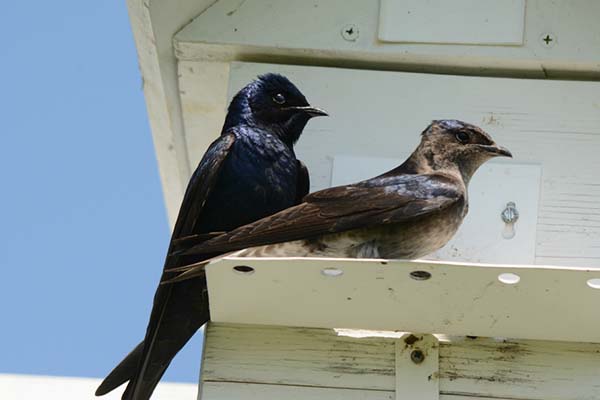
So, as a Purple Martins landlord, one of the easiest methods to help guard against others living in a Martin house is to close the entry holes during the time Purple Martins are not around.
Typically, Purple Martins will arrive in the Eastern United States is from Mid-March/Early-April and they stay through August. Although in some warmer climate areas, you will see Purple Martins as early as mid-February. So, to prevent others from becoming tenants in your Martin hotels with little effort, board up the entry holes from September to March!
What Other Birds Live In A Purple Martin House?
As discussed in the opening of this article, House Sparrows and Starlings are competitors and will take up residence in your martin housing complex along with others like Tree Swallows and Bluebirds.
House Sparrows are early migrators and will start nesting in the very early Spring, possibly even late winter for parts of the US. So, keeping in mind that Purple Martins will arrive later than House Sparrows, the timing of making your Purple Martin Houses available is important!
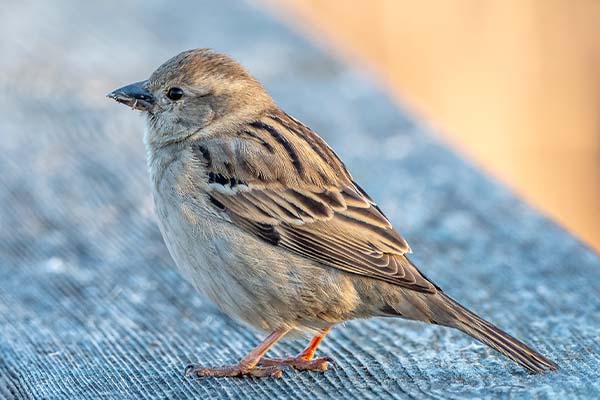
Now, European Starlings are more of an issue because many do not migrate at all! And, some refer to these birds as pests and they can be fiercely competitive for nesting sites.
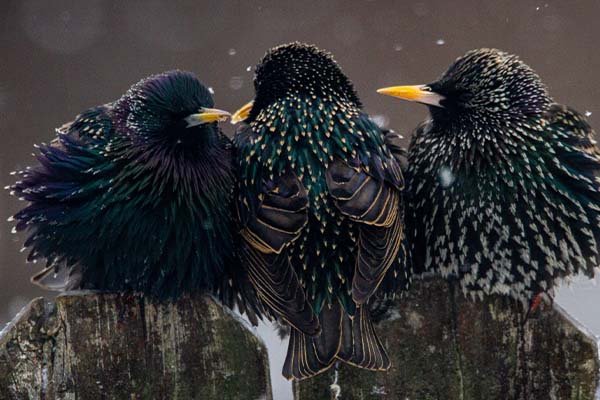
You might find Tree Swallows nesting in a Martin housing colony but, only in certain situations. A Tree Swallow will take up nesting in a Purple Martin housing colony as long as it has its own nesting space AND when it is NOT the first inhabitant in the colony. But, even though they are in the same swallow family, it is still best to prevent them from inhabiting a Martin’s colony.
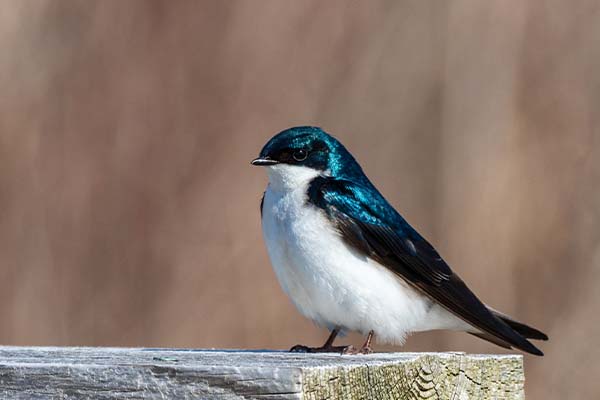
Bluebirds are another bird that might nest in Purple Marting houses. Of all the birds discussed, Bluebirds are probably the least troublesome and least competitive to the Martin.
Our best advice is to prevent all of these birds from taking up residence in your Martin housing by providing other nesting options best suited for those birds and to follow our other tips for attracting Purple Martins to your backyard.
How To Keep House Sparrows And Starlings Out Of Martin Houses
Keeping Starlings Out Of Martin Housing
Purple Martin landlords find that utilizing Starling resistant entrance holes is an effective method. What’s interesting is, thanks to Mr. Charles McEwen, a specific opening shape to gourd houses or Purple Martin houses is effective in preventing Starlings from entering.
However,
it does come with some risk as this syle opening may cause wing entrapment vs larger cavities (openings).
So what exactly is are “Starling resistant entrance holes” a.k.a. SREH? Well, it is a crescent-shaped hole, based on a 1-1/2″ radius. However, the hole is flattened. The easiest way to explain is via the diagram below:
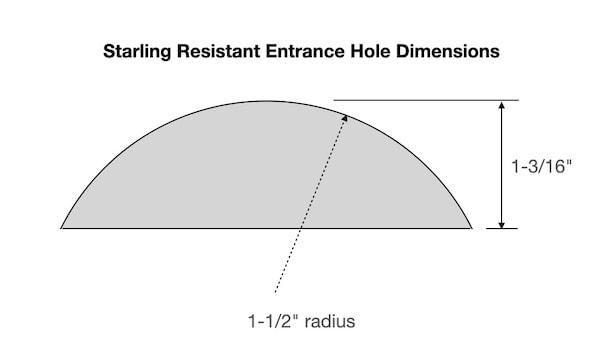
Oftentimes, landlords panic because their martins won’t enter the SREH entrance to reach a nest in time for fledglings and you think at this point that there’s something wrong with the design or construction… but remember patience!
Birds can be finicky creatures that need time to adjust when faced with something they haven’t seen before in an environment where everything seems familiar but different at the same time! We recommend having 1-2 round entrances on either side of your housing so you’re able to monitor these options easily.
Keeping House Sparrows Out Of Martin Houses
Sparrows are difficult and are a bit of a pest. If you want to deter the pesky sparrows who visit your Martin house and then zero in on the entrances. Board up the openings with wood or other materials. This will stop them from using your Purple Martin house as their home before the first Purple Martins arrive!
Keep in mind the timing of migration. You should monitor your birdhouses in the early Spring to prevent Sparrows from invading.
Installing Purple Martin Houses: Best Methods To Attract Purple Martins
Attracting Purple Martins to your yard starts with installing attractive housing options that will turn you into a Purple Martin landlord.
First off, a white color birdhouse will help attract Martins. The white color will help keep the inside of the house cooler, making it a more desirable nesting site.
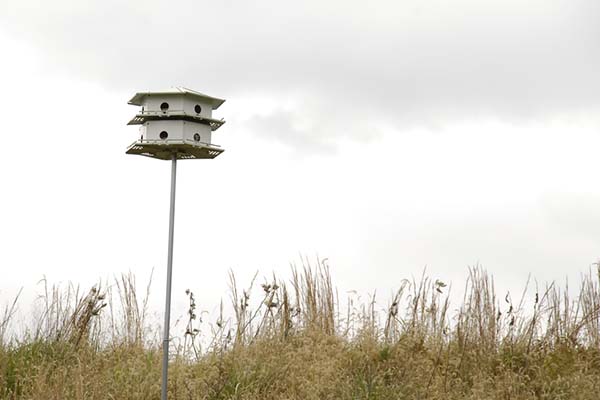
The installation of the house on a pole will also help. Consider installing a predator guard as we need to keep in mind deterring other common predators, not just competitive birds! The placement of your birdhouse is also important. Keep your location away from tall trees as Purple Martins prefer open space.
Another tip…
Purple Martins are community birds so consider housing complexes that have multiple spaces, especially when wanting to form new colonies.
And…
don’t forget food and water sources. Purple Martins love flying insects so create a backyard environment to cater to insects. Installing a small retention pond or water feature is a great way to attract Purple Martins and other species as well!
For a more detailed article on attracting Purple Martins, click this: “How to Attract Purple Martins To Your Yard“
Where Purple Martins Are Most Commonly Found
The success of attracting Purple Martins to your yard is largely dependent upon your location. Let’s face it, there is no need to worry about deterring other birds from taking up residence in your purple Martin birdhouse if you live in an area where Martins are not found.
For example, martins are typically not found in the western regions of the United States, like California, Nevada, Idaho, Washington, or Oregon State. That’s not to say you will never find a Martin colony in the states. However, it is rare.
Martins are much more prevalent in the eastern portions of the United States. So, if you live in this portion of the United States and want to Attract Purple Martins, pay attention to the nesting habits and nesting season for Purple Martins. And, heed the advice in this article of preventing other bird species from begin nesting activities in your Purple Martin birdhouse.
Other Helpful Tips When Becoming A Purple Martin Landlord
Keep in mind what Purple Martins require to be comfortable and safe. We already discussed food and water sources such as insects and water features in your yard. Within your new colonies housing setup, keep in mind that just like all other bird species, Martins desire good nesting material for optimal egg laying conditions. This can include cedar shavings to make young birds comfortable. And, there is nothing more satisfactory than realizing that a female lays her eggs in a new housing environment that you created.
And, while human housing tends to be square and rectangular in nature, that doesn’t need to be the case for a Purple Martin nest! Martins love gourds to house in.
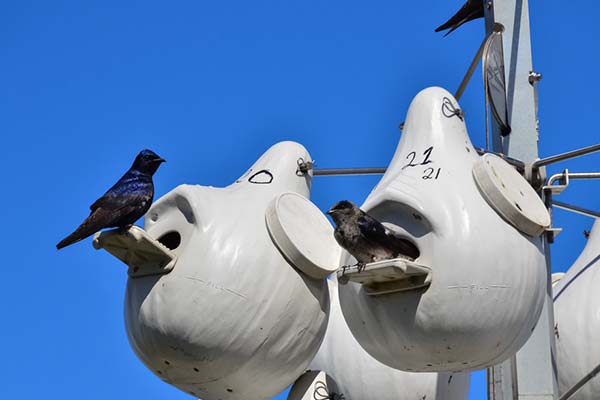
And, plastic gourds work well on a gourd rack and stand up to elements. In fact, you can create an entire housing colony with a collection of plastic gourds on a gourd rack – perfect to attract Purple Martin adult males!
Related Martins Articles:
- What Do Purple Martins Eat?
- What Direction Should Purple Martin Houses Face?
- Dawn Song That Purple Martins Make
- How To Attract Purple Martins

